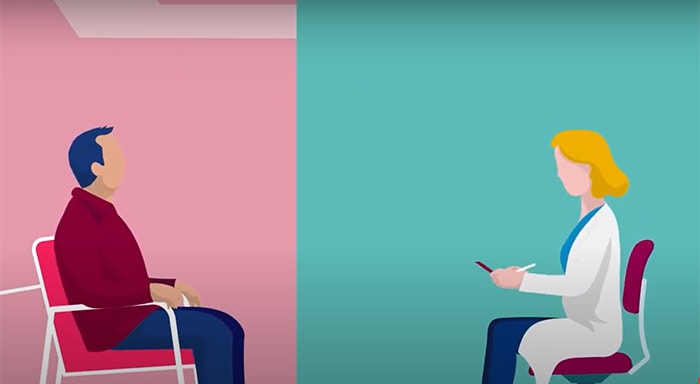10 innovative examples of telehealth in action
Apr 01, 2021 - Reading time 10-12 minutes
Spurred on by the COVID-19 pandemic, healthcare providers have turned to telehealth to bridge distances in times of physical separation. What will this new era of virtual care look like beyond the pandemic? Here are ten telehealth examples that give a glimpse into the future of healthcare delivery – showing how telehealth can not only deliver a more convenient experience to staff and patients, but also extend the reach of care to those who may have trouble accessing it.

1. Screening and engaging patients remotely before they enter a care facility
Among the many examples of telehealth that were propelled by necessity during the pandemic, one that is likely to endure is online patient screening and engagement – even before the patient sets foot in a care facility.
Since COVID-19 hit, hospitals and home care organizations have been using online questionnaires to triage and monitor suspected coronavirus patients, with call centers contacting high-risk patients for additional information before referring them to the appropriate care provider. This has helped to prevent both staff and patients from being exposed to unnecessary risks, while using limited resources where they were needed the most.
Although safety risks will subside as the pandemic abates, there are many other reasons why online screening and engagement tools will continue to see more widespread adoption – including increased convenience, a more engaged patient, and the potential to reduce hospital length of stay.
For example, online lifestyle coaching could help get patients into better physical shape prior to a surgical procedure that would normally require them to stay in the hospital for a few days. With remote health monitoring added as a safety net after hospital discharge (see example #7 below), patients may be able to return home earlier to recover in the comfort of their homes.

2. Welcoming patients to a care facility through digital front doors
In an age where we can book a flight or hotel room online in seconds, picking up the phone to schedule an appointment at a care facility can feel like a cumbersome chore. But healthcare is now quickly catching up, with the advent of online scheduling tools that allow patients to easily select a calendar slot that fits their busy schedules – while optimizing staff and location availability at the same time.
Once patients have scheduled their appointment, ongoing digital patient engagement can bring them further along on their journey. This can also help to reduce the chances that patients don’t show up for their appointment due to safety concerns or other reasons, which is a common challenge in healthcare today. In radiology, for example, no-show rates can be as high as 7% [1] – causing preventable delays in diagnosis and treatment, workflow disruptions, and financial losses of up to $1 million [2].
During the pandemic, leading radiology centers have used personalized text messages to remind patients of their upcoming exams, making them feel at ease by sharing links to safety protocols and other educational content. They have also virtualized their check-in processes, allowing patients to check in with a text message once they arrive at the hospital. Staff receive an automatic notification via the EHR system and can send a text message back once they are ready to see the patient.
This sort of ‘virtual waiting room’ could very well become the new norm – allowing patients to enjoy a leisurely stroll or wait in the comfort of their car right until the start of their appointment.

3. Supporting the acquisition of medical images remotely
Next to telehealth tools that connect patients to care providers, the use of provider-to-provider telehealth has also skyrocketed over the past year, offering healthcare professionals new ways to collaborate even when they are many miles apart. As health systems faced unparallel, turbulent times in 2020, leaders have learned to embrace partnership as a means for continued innovation and access to care.
One such innovation in medical imaging, called the Radiology Operations Command Center, enables expert imaging technologists to remotely train, guide, and assist less experienced or specialized colleagues in satellite locations. The power of this concept is that it allows for collaboration and over-the-shoulder support in real time, while the patient is on the scanner table. This help to ensure consistent image quality across sites, minimizing the need for unnecessary repeat scans that place a burden on patients and staff alike.
As an additional benefit, this virtual hub-and-spoke model can also expand access to advanced imaging such as MR and CT at more locations, closer to where patients live, at more flexible hours. Not only does this offer patients more convenience, it means they have a better chance of getting timely diagnosis and treatment, wherever they live.

4. Bringing ultrasound expertise to the bedside with live remote collaboration
Tele-ultrasound is another of many emerging examples of telehealth can help to make expert knowledge more widely available throughout a health network – particularly in remote regions where specialized staff may be in short supply.
Although ultrasound technology is getting easier to operate, it still requires a relatively high level of manual skills, especially in more complex clinical cases. Using a live collaboration platform integrated into an ultrasound system, an experienced sonographer at an urban hospital can support a colleague at a remote site in performing the exam.
A specialized doctor can use the same tele-ultrasound platform to provide instant reassurance to the patient and explain the exam findings from a distance, saving patients the stress of having to wait for their results for one or two weeks.

5. Enabling interventional physicians to learn without having to leave their lab
Interventional physicians, who perform image-guided minimally invasive procedures, have also started to explore the use of virtual collaboration platforms to continue providing peer-to-peer education – even when they can’t be in the same room because of COVID-related travel restrictions.
In-depth knowledge of new and highly specialized interventional procedures can be limited to a small pool of physicians. Normally, these experts would be physically present in an interventional room to offer a less experienced user on-the-job training. Through virtual collaboration, they can look over their peer’s shoulder via webcams mounted on the ceiling of the interventional room. Similarly, technical experts – who know all the ins and outs of a specific treatment device or interventional system – can be called in for remote support before, during, and after procedures.
Although it’s still early days and further testing remains to be done, first experiences with this type of cloud-based collaboration have been highly encouraging. For example, one study showed how an expert physician in Canada successfully supervised the first US use of a new type of implant to treat aneurysms in the brain, through bidirectional audiovisual streaming, and with images being shared in a de-identified, HIPAA-compliant manner [3].
In the future, one can imagine wider use of such tools for the rapid dissemination of knowledge – with expert interventional physicians dictating, annotating, and securely sharing their own educational videos.
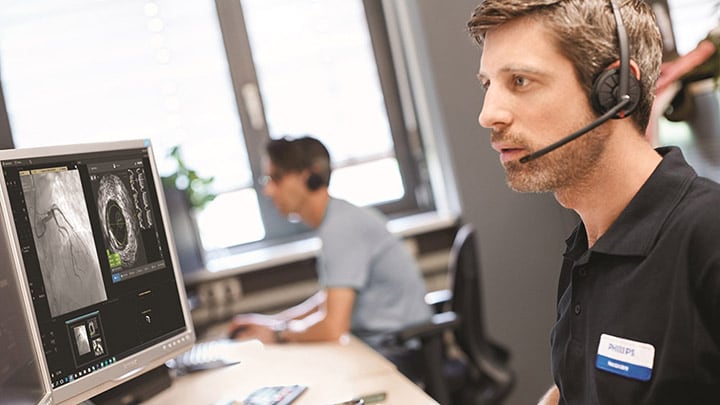
6. Assisting intensive care teams from afar
Tele-ICUs are another great example of how telehealth can extend the line of sight of physicians to any hospital in the country – or even the world.
Led by an intensivist care team in a central monitoring facility that acts somewhat like an air traffic control center, tele-ICUs allow for patients to be monitored remotely and transitioned to the most appropriate care setting. Intensivists and nurses in the central hub are supported by high-definition cameras, telemetry, and advanced data visualization to assist their bedside colleagues, wherever they are located. Predictive analytics alerts care teams to early signs of patient deterioration, allowing them to intervene quickly when needed.
During the pandemic, tele-ICUs have played a pivotal role in providing acute care support as ICUs were flooded with patients. Prior to the pandemic, tele-ICUs already demonstrated their value in addressing intensivist staff shortages. For example, through a cross-continental tele-ICU collaboration, critical care teams in Australia can keep a caring eye on patients in a US hospital to reduce the burden of traditional night shift work. With COVID-19 primed to leave a lasting mark on healthcare delivery, the next few years will likely see a further expansion of tele-ICU programs around the world.
Tele-ICU programs show how strategic collaborations, through fostering long-term relationships, can address operational, technical and clinical needs while driving efficiencies in health systems large and small.
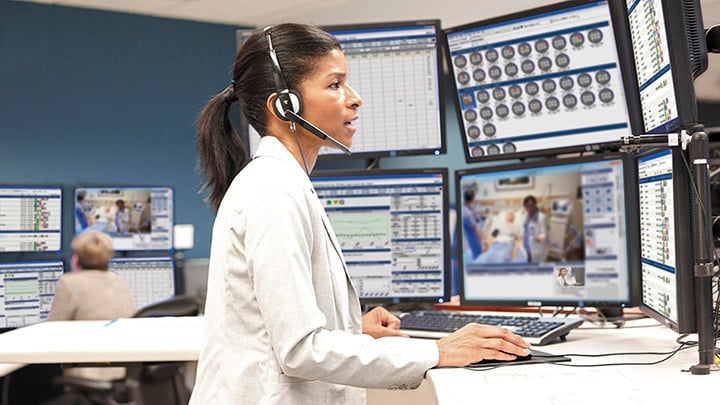
7. Keeping a caring eye on patients with wearable biosensors
Where will remote patient monitoring go from here? Expect wearable biosensors to be a big part of the answer. Worn discreetly on the chest, these sensors can measure and transmit vital signs such as respiratory data and heart rate, as well as other patient data like posture and activity level.
Following the COVID-19 outbreak and the PPE shortages that initially accompanied it, hospitals have benefited greatly from using wearable biosensors to closely monitor patients on dedicated COVID-19 wards without exposing staff to unnecessary risks. Yet their potential application extends well beyond that – from low-acuity settings in the hospital all the way into people’s homes.
In the Netherlands, for example, we recently launched a new wearable sensor that can help physicians keep a close eye on patients to support the transition from hospital to home. The sensor transmits relevant health data every 5 minutes for 14 days.
In the long term, wearable biosensors could also support remote monitoring of chronic diseases like COPD as healthcare moves into the home. The potential benefits are clear to see: increased comfort for the patient, reduced cost of care, and an opportunity to act on patient deterioration earlier in order to prevent avoidable hospital readmissions.
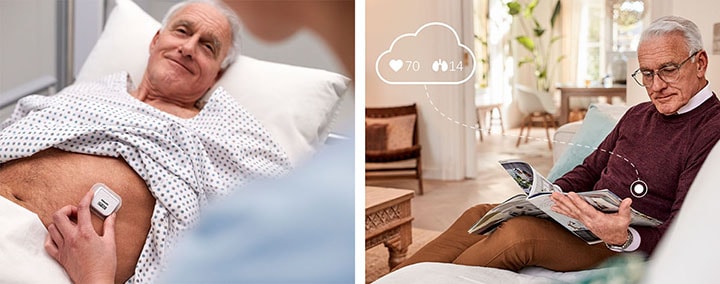
8. Giving comfort to expecting moms through remote monitoring
One large population set to benefit from new monitoring technologies are pregnant moms, especially those at risk of complications. With many women worrying about the impact of COVID-19 infection on pregnancy [4], the pandemic has highlighted the value of remote prenatal care.
Using a wireless pad and disposable electrode patches placed on the woman’s abdomen, caregivers can monitor vital signs of both mother and baby remotely to reduce unnecessary physical interactions. The expecting moms don’t need to take the patches on and off – they can even wear them in the shower or while they are asleep.
Post-pandemic, we expect to see a further adoption of remote obstetrics monitoring, offering high-risk women increased peace of mind while keeping them closely connected to their caregivers.
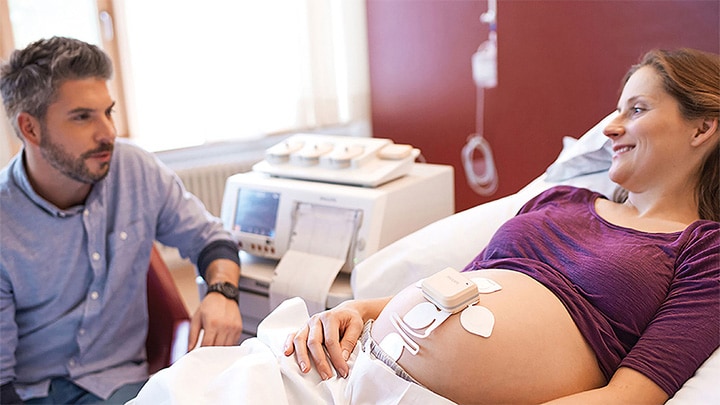
9. Promoting oral health through virtual dental visits
In the long list of examples of telehealth that have been accelerated by COVID-19, tele-dentistry should not go unmentioned – because it offers exactly the sort of convenience and on-demand access that the modern health consumer has come to expect.
Tele-dentistry allows patients to consult a licensed dentist via a mobile app, without having to leave their home or make an appointment. By sharing high-resolution photos of their teeth and flagging specific concerns, they can get a personalized assessment and practical advice for ongoing improvement of their oral health.
For dental professionals, many of whom switched to virtual consultations in the wake of the pandemic, tele-dentistry offers a way of keeping in touch with patients in between visits, allowing them to monitor progression of oral health conditions such as gum disease or to follow up on treatment remotely. Insurers are paying notice, with some now offering full reimbursement for virtual consults at zero additional cost for its members.

10. Offering easy access to telehealth via a virtual care station
Despite the clear potential of these and other telehealth examples to improve access to care regardless of where patients live, the pandemic has also sparked concerns that large parts of the population may be left behind because they lack access to a reliable internet connection [5]. And this is not just a rural problem. In New York City, for example, almost 50% of low-income households lack internet access [6].
That’s why it’s important that telehealth innovations are supported by new physical access points, especially in underserved communities.
With that goal in mind, we developed a US-based concept called the Virtual Care Station: a pod-based telehealth environment that delivers virtual care services in convenient neighborhood locations such as retail establishments or town halls. Patients can sit down in a private room to have a virtual chat with their healthcare provider. The Virtual Care Station features a high-quality camera, lighting, and speakers – all specifically designed to help the provider get a good view of the patient’s area of concern such as a wound or skin issue.
The Virtual Care Station is inspired by our work with the Department of Veterans Affairs Accessing Telehealth through Local Area Stations (ATLAS) program and showcases our deep investment in partnerships for innovation across care ecosystems.
It’s a clear sign of the future to come: one in which patients will be able to connect with their providers anytime and anywhere, through a smart combination of home-based monitoring, telehealth visits, and physical access points close to where patients live.
Click here to learn about how we can work together to help transform patient care and further innovation.
Further reading with more examples of telehealth
To learn in more detail about some of these – and other – telehealth examples, read: What will it take for telehealth to become permanent beyond the pandemic? Three medical experts weigh in on the opportunities and challenges ahead:
References
[1] Rosenbaum J.I., Mieloszyk R.J., Hall C.S., Hippe D.S., Gunn M.L., Bhargava, P. (2018). Understanding Why Patients No-Show: Observations of 2.9 Million Outpatient Imaging Visits Over 16 Years. J Am Coll Radiol, 15(7):944-950. https://doi.org/10.1016/j.jacr.2018.03.053
[2] Rebecca J., Mieloszyk, J.I., Rosenbaum, C.S., Hall, U., Puneet B. (2018). The Financial Burden of Missed Appointments: Uncaptured Revenue Due to Outpatient No-Shows in Radiology. Current Problems in Diagnostic Radiology, 47(5): 285-286. https://doi.org/10.1067/j.cpradiol.2018.06.001
[3] Orru' E, Marosfoi M, Patel NV, et al. (2020). International teleproctoring in neurointerventional surgery and its potential impact on clinical trials in the era of COVID-19: legal and technical considerations. Journal of NeuroInterventional Surgery. https://doi:10.1136/neurintsurg-2020-017053
[4] Nanjundaswamy MH, Shiva L, Desai G, et al. (2020). COVID-19-related anxiety and concerns expressed by pregnant and postpartum women-a survey among obstetricians. Arch Womens Ment Health. 23(6):787-790. https://doi:10.1007/s00737-020-01060-w
[5] Bakhtiar M, Elbuluk N, Lipoff JB. The digital divide: How COVID-19's telemedicine expansion could exacerbate disparities. J Am Acad Dermatol. 2020;83(5):e345-e346. https://doi:10.1016/j.jaad.2020.07.043
[6] City of New York. De Blasio Administration Releases Internet Master Plan For City's Broadband Future. 2020. https://www1.nyc.gov/office-of-the-mayor/news/010-20/de-blasio-administration-releases-internet-master-plan-city-s-broadband-future
